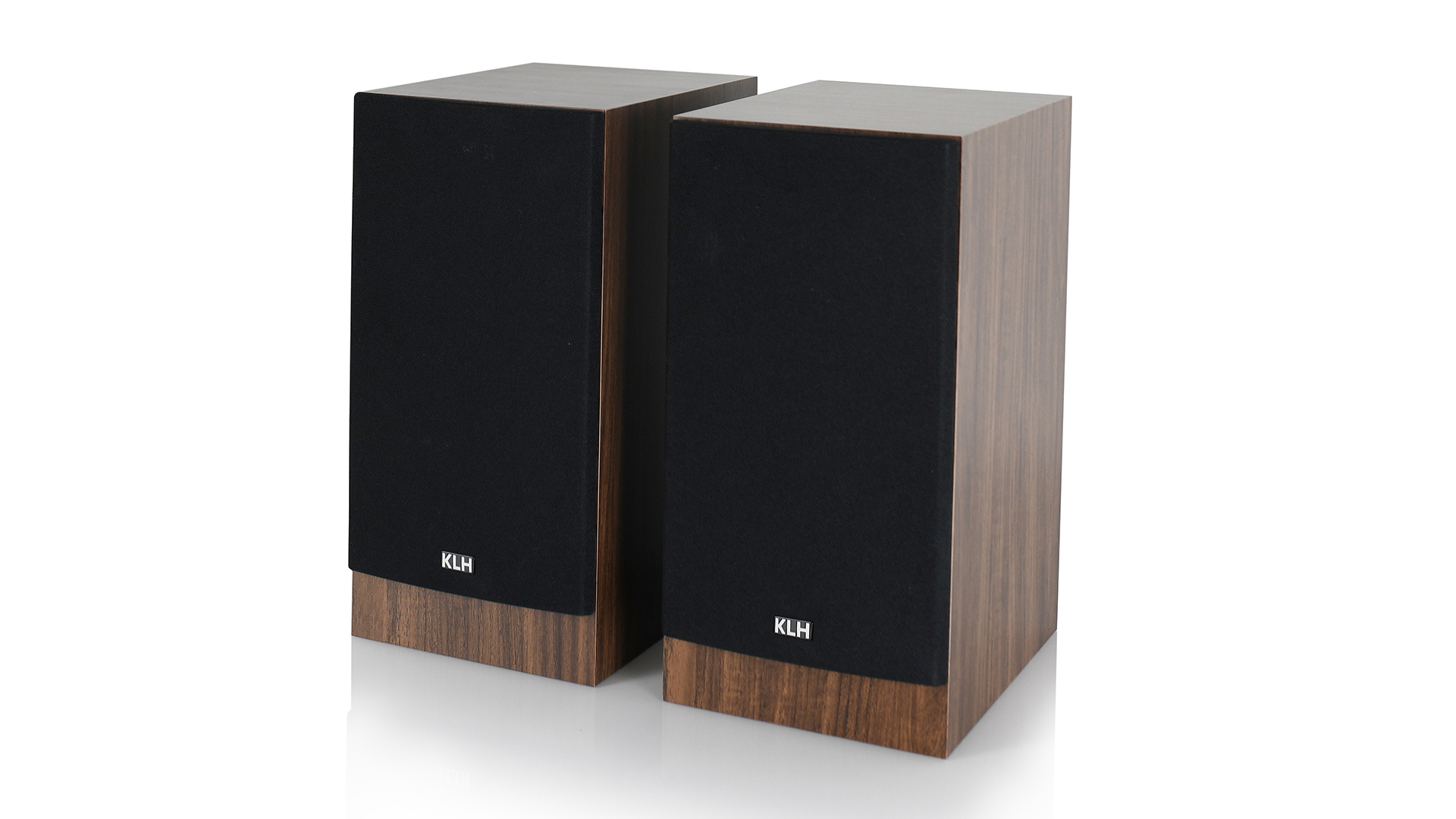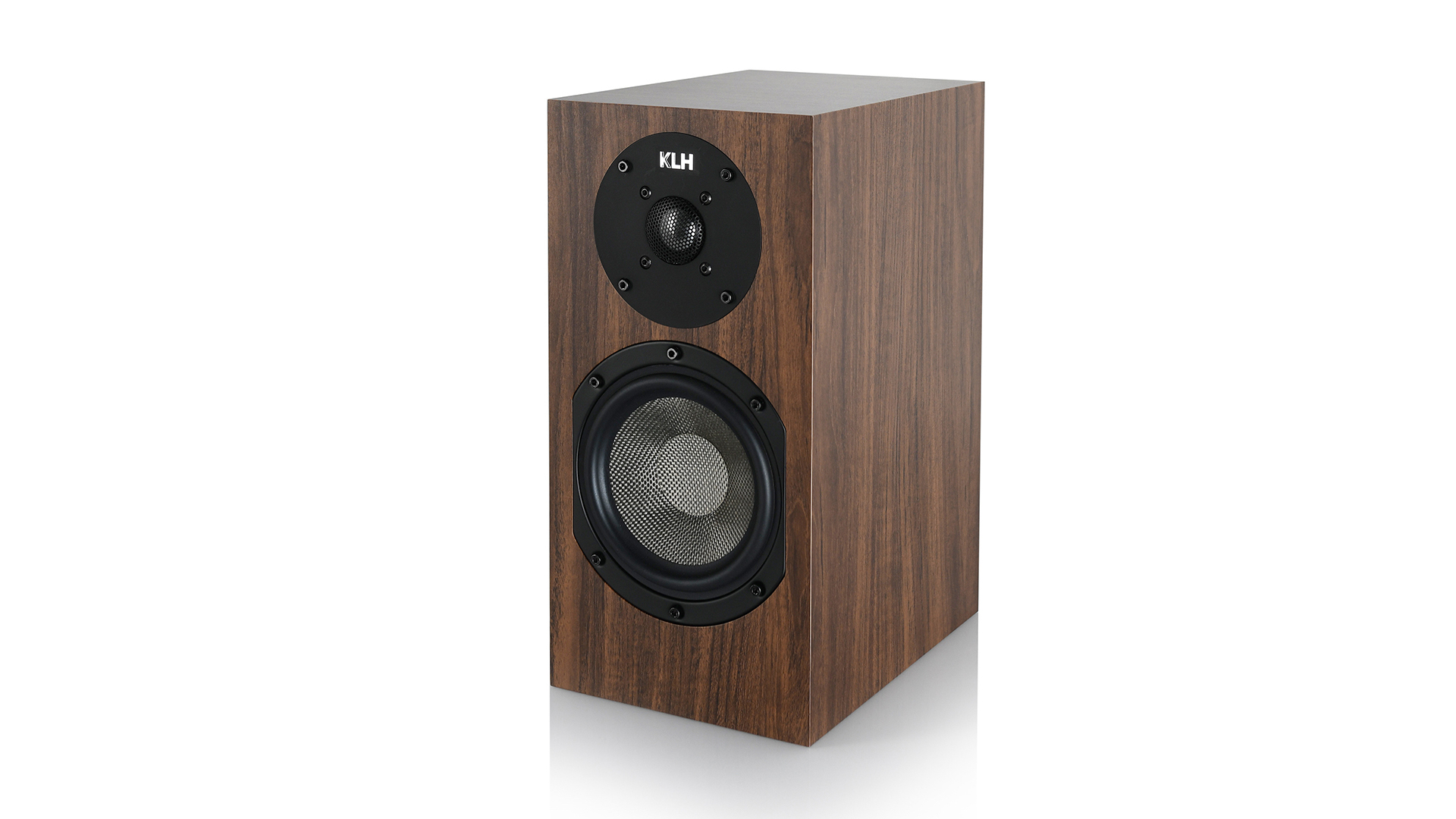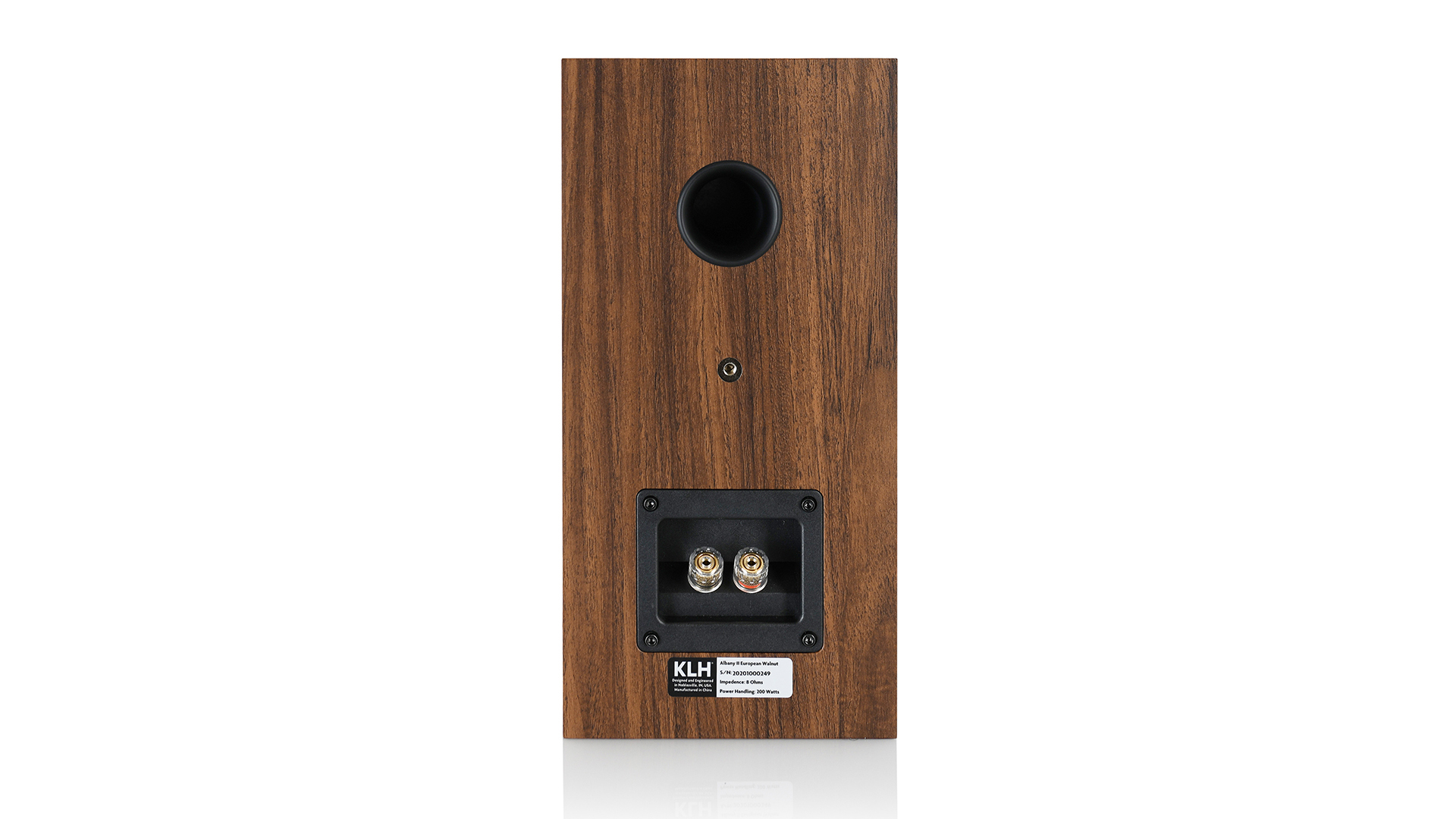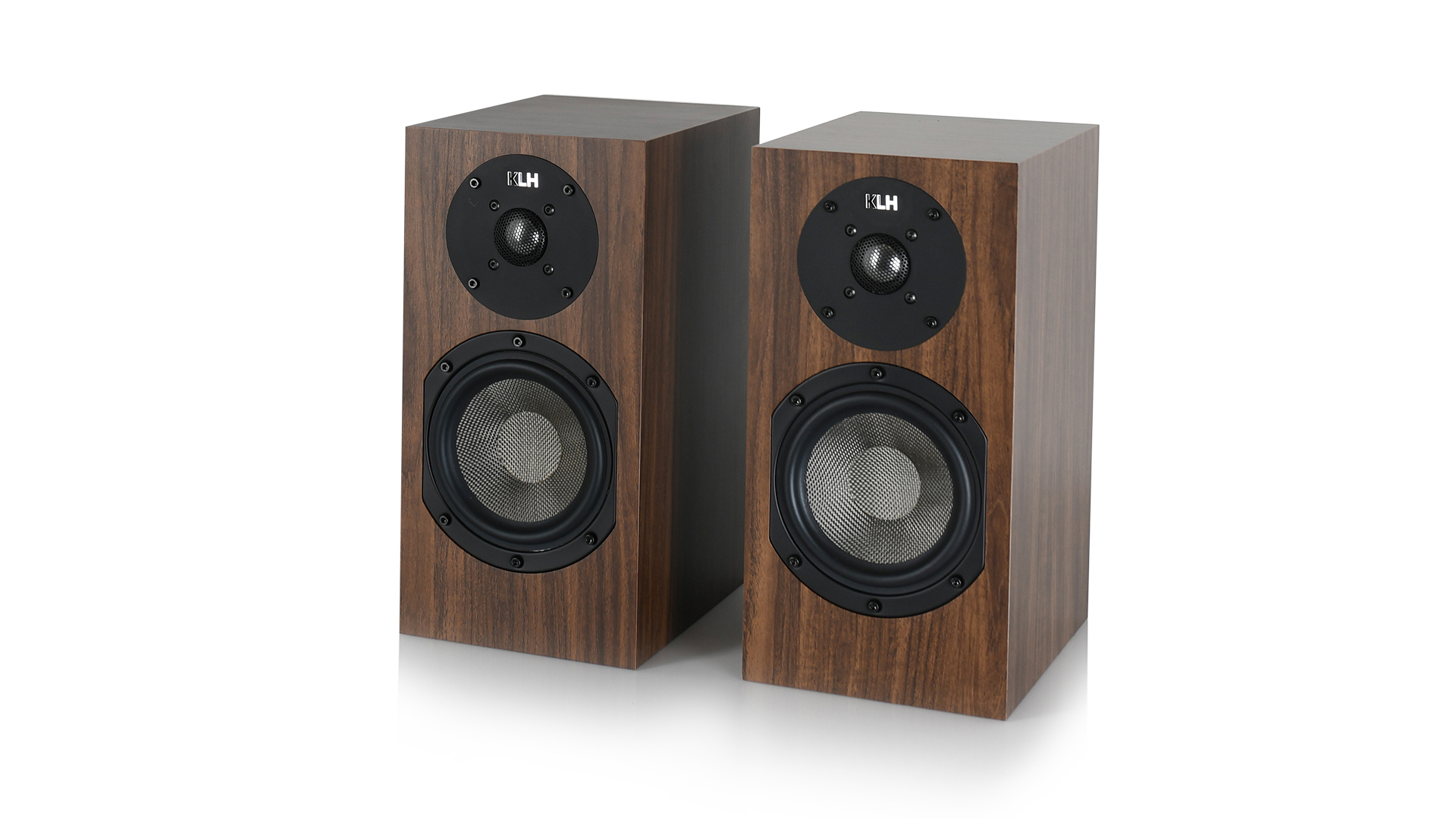What Hi-Fi? Verdict
The Albany II are better balanced than their predecessors, but there’s still plenty of room for improvement
Pros
- +
Wide-open, spacious soundstage
- +
Clear, clean and snappy character
Cons
- -
Bass-light, unrefined treble
- -
Outclassed for resolution and dynamics
- -
Finish issues
Why you can trust What Hi-Fi?
We believe in second chances as much as the next good samaritan, so when KLH approached us with sequels to the Albany speakers that we found ourselves less than enamoured with in 2018, we were more than willing to give them a whirl.
For the Albany II, the US brand has moved from a sealed enclosure to the more commonly used rear-ported one in an effort to beef up bass performance, which we thought lacked weight and authority in the originals. This cabinet design also helps with flexible positioning, so long as you aren’t looking for a pair that can be comfortably shoved right up against a wall or in a corner.
But perhaps the most eye-raising change – and one sure to put stars in the eyes of potential buyers – is the generational price drop from £499 ($479) to £299 ($300) a pair. That sees the Albanys enter a different market price point this time round, but one that’s no less competitive, with the likes of the What Hi-Fi? Award-winning Elac Debut B5.2 and five-star Wharfedale Diamond 12.1 swarming those seas. So, are the Albany II closer to The Godfather Part II or the Titanic II of sequels?
Design

KLH admits the price plummet was possible in part due to a move from a veneer finish (which we called out for being applied to an “impressive standard”) to a vinyl wrap in either ‘European Walnut’ and ‘Black Oak’, and it’s understandable that the company has had to compromise aesthetic quality to reach that significantly lower price point.
As is to be expected, that does give the Albanys a more mediocre cabinet look – one that isn’t as impressively polished or interesting, albeit not uncommonly so for budget speakers. It has to be said, though, that the 5.25-inch Woven Kevlar mid/bass unit and one-inch anodized aluminium tweeter (the latter of which is borrowed from KLH’s five-times-the-price Kendall floorstander) do look pretty striking against our walnut-wrapped sample.
We are, however, disappointed by the 'KLH' logo on one of the speakers being a little lopsided as that suggests a lack of care has been taken in the finishing of the product. It’s not the end of the world, but both of their aforementioned close rivals – particularly the Wharfedales – show that a relatively high degree of build quality is possible at this level.
Understandably, and probably not a deal-breaker for most, KLH has opted for single rather than bi-wire terminals this time round, too.
The latest hi-fi, home cinema and tech news, reviews, buying advice and deals, direct to your inbox.
Sound

We hook the Albany II up to several price-spanning systems over a fortnight or so, driven by the likes of our reference Burmester 088/911 Mk III, Marantz PM6007 and the Naim Uniti Atom in that time, and they work well relatively close to a rear wall. KLH recommends they sit at least 12 inches (30cm) from one, which we find to be a sound suggestion, settling on around 25cm to achieve the optimal tonal balance in our test room. Initially, that’s one that veers on the side of uneasy upper-frequency brightness, as was the case with their predecessors, but thankfully a few overnights and a whole weekend of running in sees that die down and the sound fill out.
As a result, the Albany II are, while still on the lean side, more acceptably balanced than the originals. They don’t sound as top-heavy, and are generally easier and more pleasant to listen to for that. The clarity and punchy, up-for-it character that we praised the Albany for has carried over into the sequels, too, making for a sonic signature that’s impressively agile, open and clear at this level.
Play Tyler, The Creator’s I THINK and the rhythm is suitably lively and presented within an invitingly open soundstage, with plenty of space between each strand of music helping to keep things listenable as the production gets denser. Similarly with 65daysofstatic's Prisms, the presentation is big and broad enough to make such a soundscape effective. The speakers do well to convey the pacey synths and dot each element around the soundstage, although we find the original Albanys do this with slightly more precision.

Finishes x2 (European Walnut and Black Oak)
Dimensions (hwd) 13 x 6.5 x 9.5"
Sensitivity 92dB
Impedance 8ohms
And now it’s time to address the elephant in the room: the three-star rating that sits atop this review. While the Albany II’s bass reflex port design has indeed improved overall balance, the speakers are still too bass-light to make much of a meal of the more foreboding moments that serve to anchor the instrumental piece. There’s a lack of solidity through the lower registers, with kick drums and droning synths sounding more substantial through the Wharfedale Diamond 12.1 and, to a lesser extent, even the original Albanys.
That scarcity of solidity and warmth can’t help but seep into the mid-band too. Nina Simone’s Montreux Blues from the 2021 Nina Simone: The Montreux Years (Live) release is an atmospheric, dynamic recording, but the KLH don’t manage to surface as much texture or dynamic insight behind Simone’s vocal, the piano accompaniment and harmonica solo as their class-leading rivals can. With agility doesn’t come convincing musical cohesiveness here either, the Albany II’s delivery rhythmically and dynamically flatter than we’d expect, even at this humble price point.
Finally, while it’s true that the treble is less grating and isolated from the other frequencies after a good run in, we still yearn for greater refinement here too.
Verdict
In some ways, the Albany II take the company’s budget model in the right direction; in others, they sadly do not. The new Albanys readdress the thin, harsh tonal balance of their predecessors, but they have lost some precision and made sacrifices in build quality along the way. They are neither The Godfather Part II or Titanic II of sequels, then, but somewhere in between.
SCORES
- Sound 3
- Compatibility 4
- Build 3
MORE:
Read our round-up of the best bookshelf speakers
Check out our review of Elac's Debut B5.2 speakers
Read our Wharfedale Diamond 12.1 review
What Hi-Fi?, founded in 1976, is the world's leading independent guide to buying and owning hi-fi and home entertainment products. Our comprehensive tests help you buy the very best for your money, with our advice sections giving you step-by-step information on how to get even more from your music and movies. Everything is tested by our dedicated team of in-house reviewers in our custom-built test rooms in London, Reading and Bath. Our coveted five-star rating and Awards are recognised all over the world as the ultimate seal of approval, so you can buy with absolute confidence.


